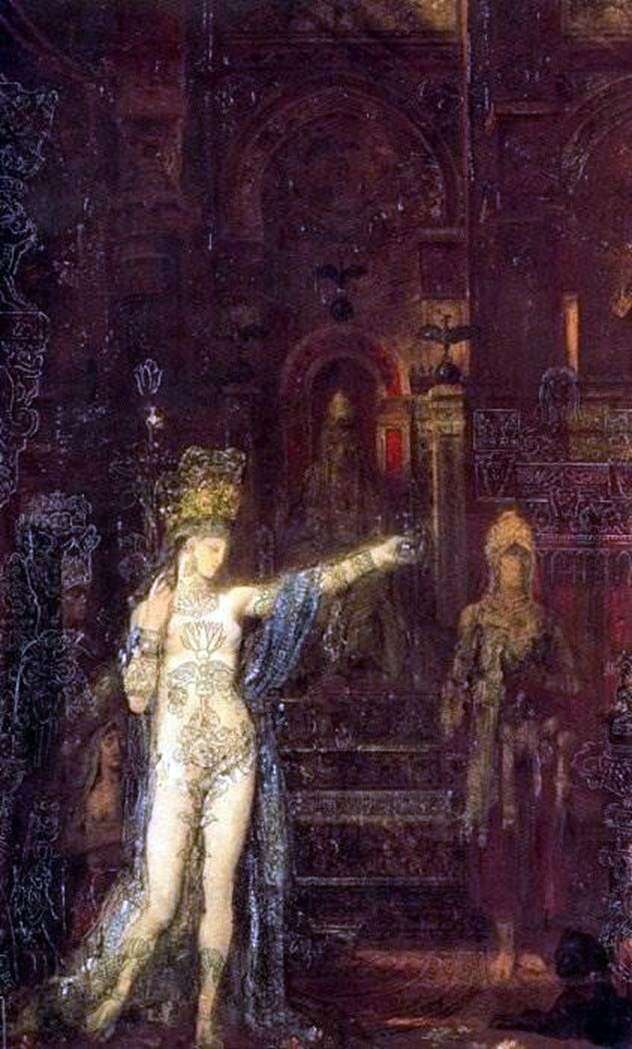
Moreau began to paint this painting around 1874, but it remained unfinished. Details of the situation and the tattoo on the body of Salome speak of Moro’s increased interest in Eastern exoticism. The image of Salome worried Moreau. The artist wrote it again and again. And in each case, Salome Moreau remained an attractive and dangerous woman.
Scenes associated with the beheading of the head of John the Baptist, are found in medieval painting. The Salome dance described in the Bible and the execution of the Forerunner are often combined into one composition. In the early medieval paintings, Salome is motionless; later she is portrayed dancing. The biblical image of an insidious woman, Salome, in which beauty and death are intertwined, attracted many artists of the end of the XIX century, and everyone solved it in his own way.
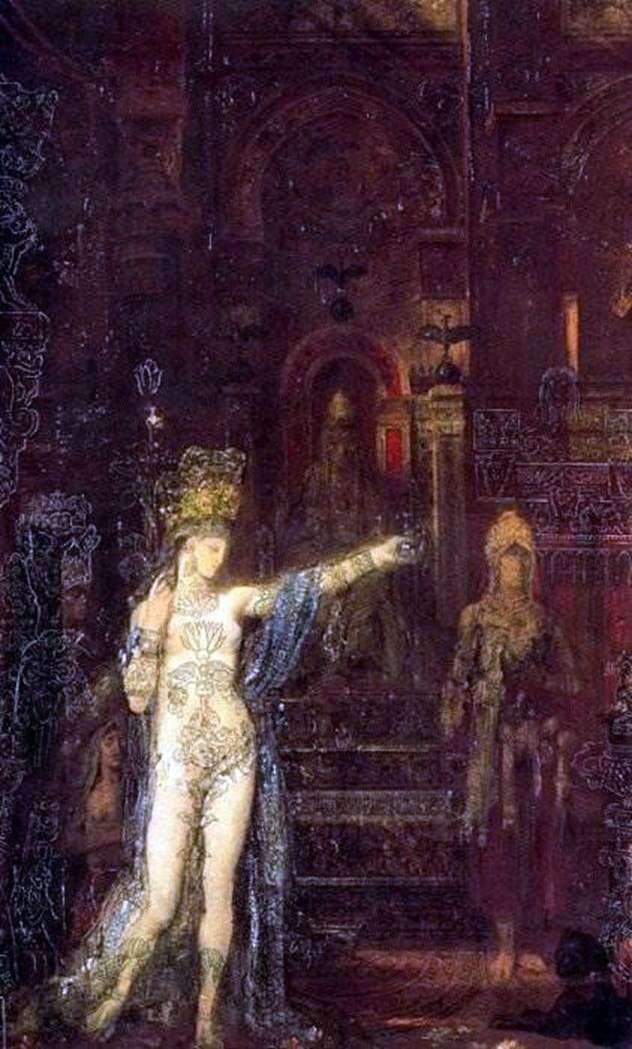 Salomé tatuado – Gustave Moreau
Salomé tatuado – Gustave Moreau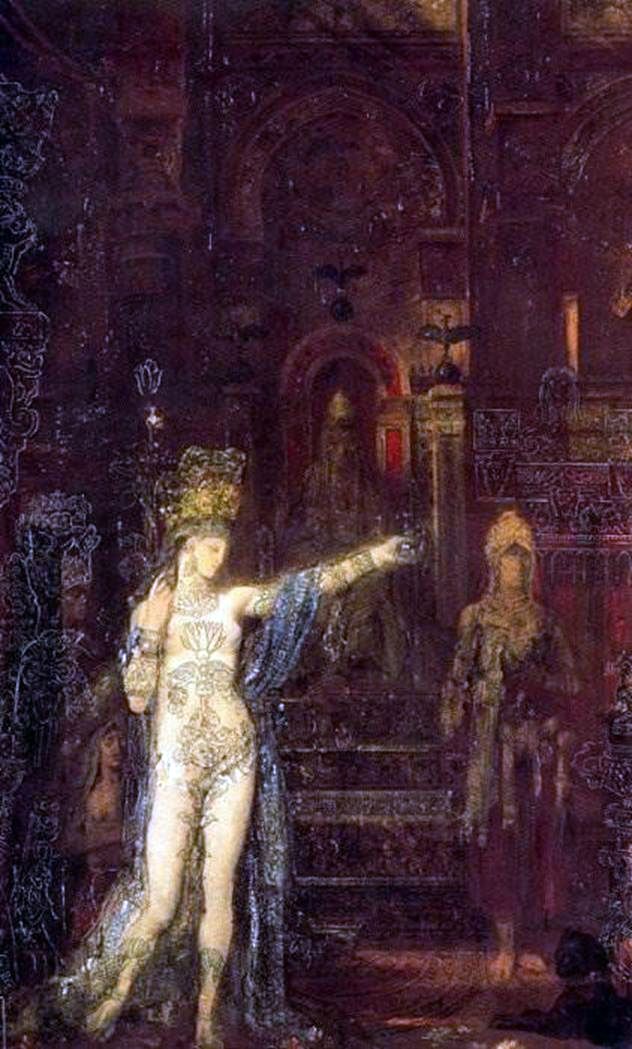 Salomé tatoué – Gustave Moreau
Salomé tatoué – Gustave Moreau Salome Dancing Before Herod by Gustave Moreau
Salome Dancing Before Herod by Gustave Moreau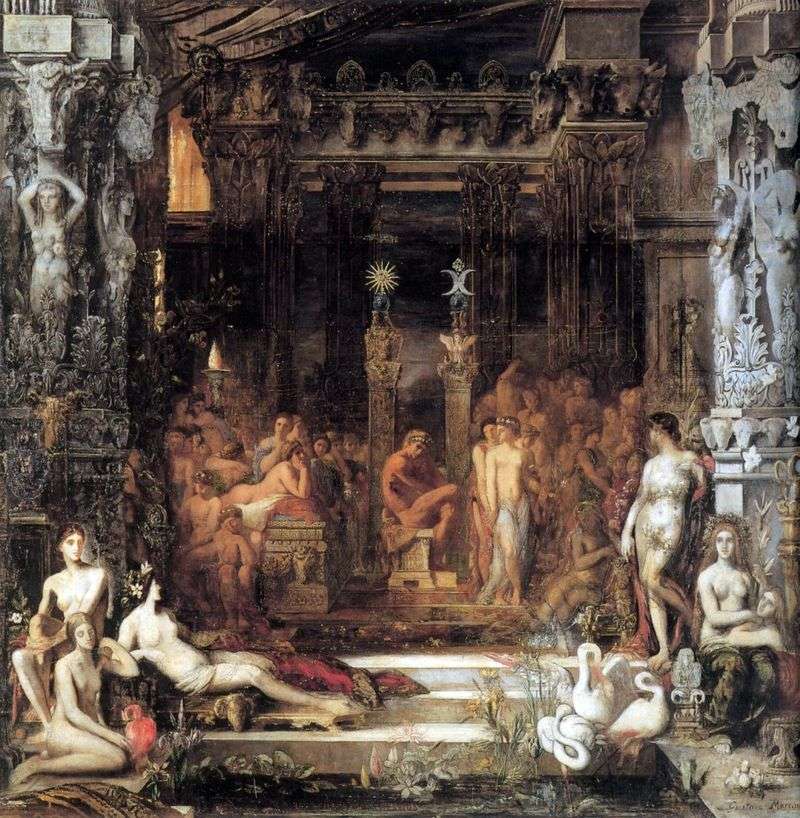 Tesea’s Daughters by Gustave Moreau
Tesea’s Daughters by Gustave Moreau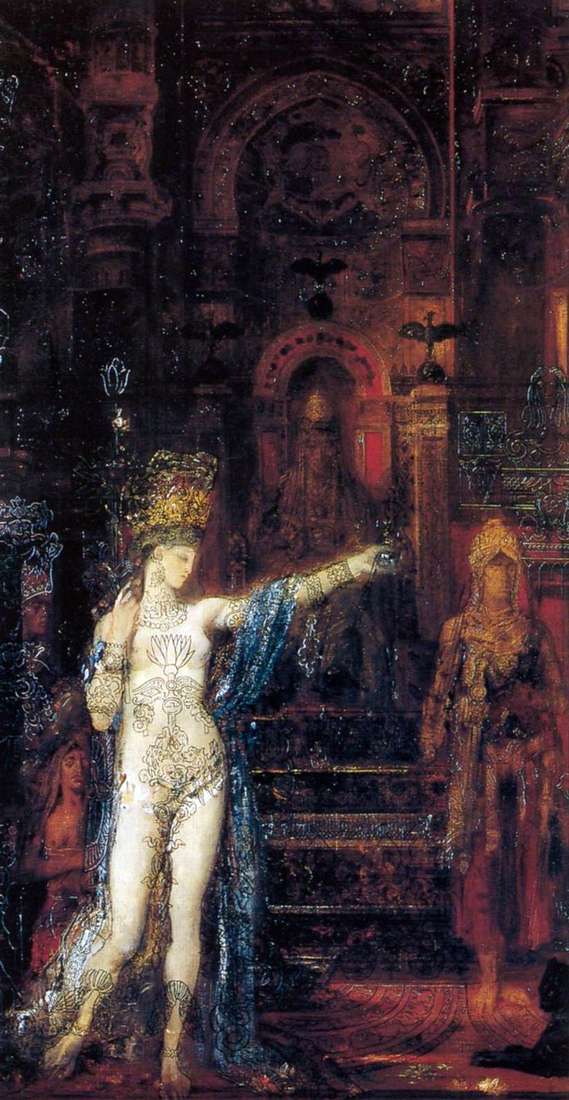 El baile de Salomé ante Herodes – Gustave Moreau
El baile de Salomé ante Herodes – Gustave Moreau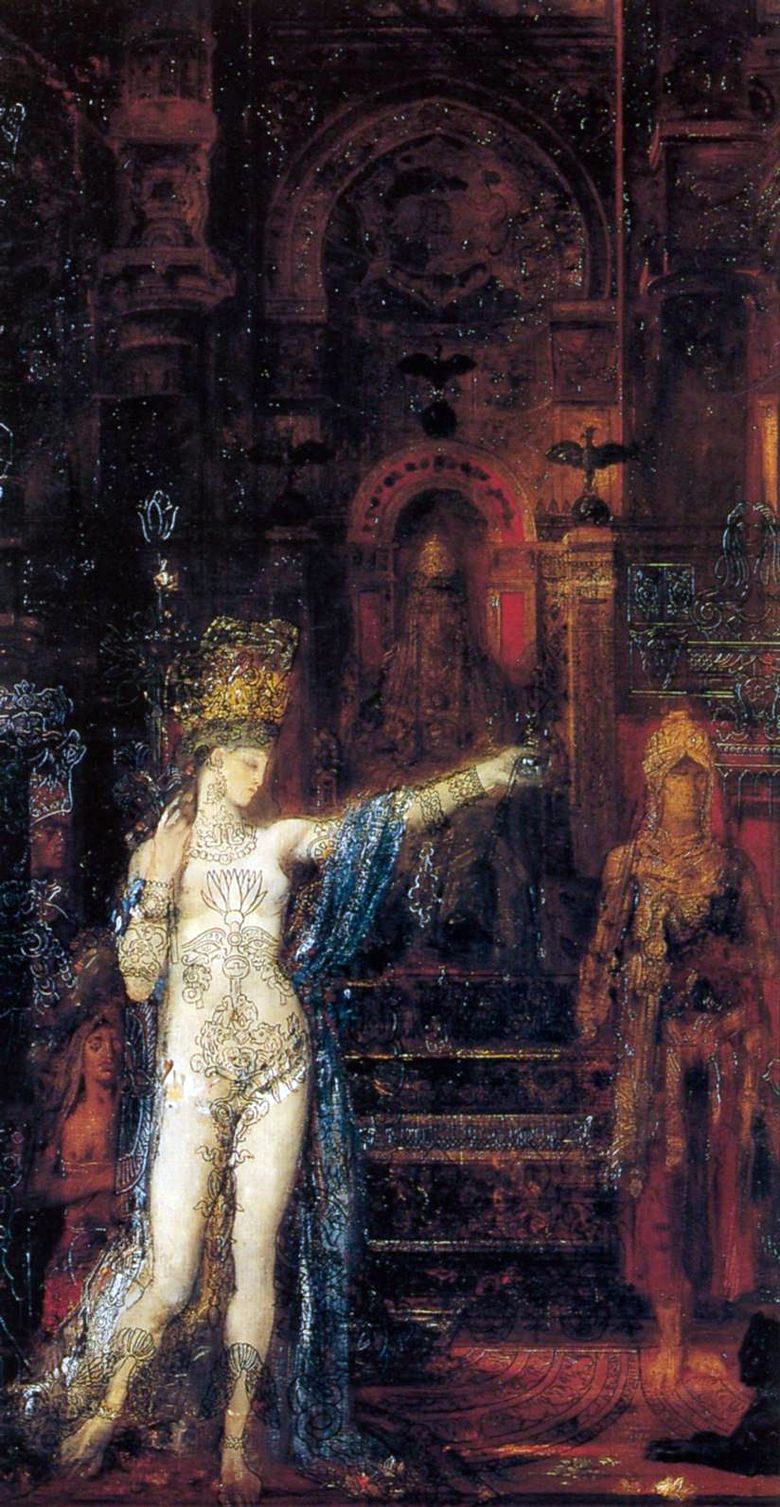 Salomé dansant devant Hérode – Gustave Moreau
Salomé dansant devant Hérode – Gustave Moreau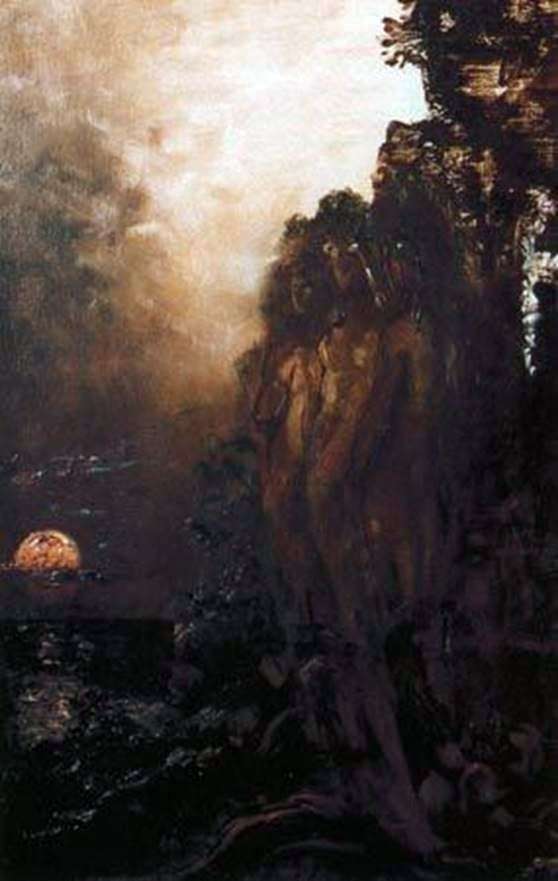 Sirens by Gustave Moreau
Sirens by Gustave Moreau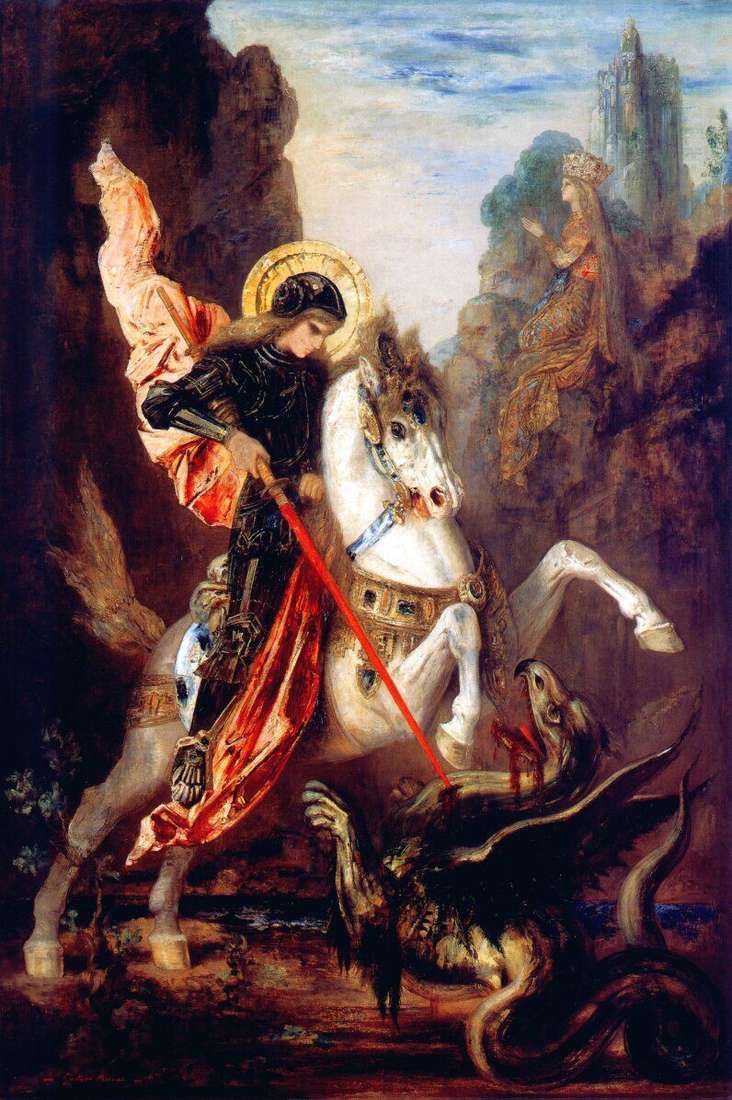 Saint George and the Dragon by Gustave Moreau
Saint George and the Dragon by Gustave Moreau